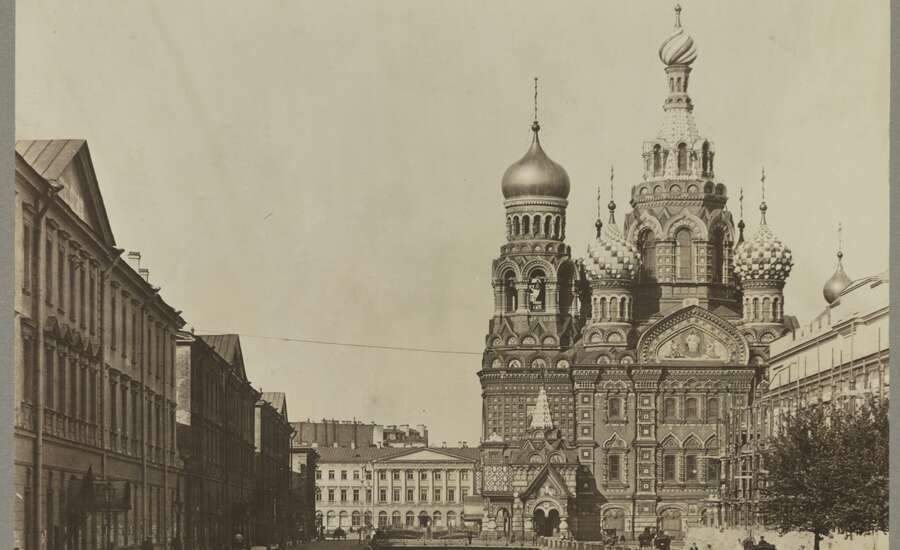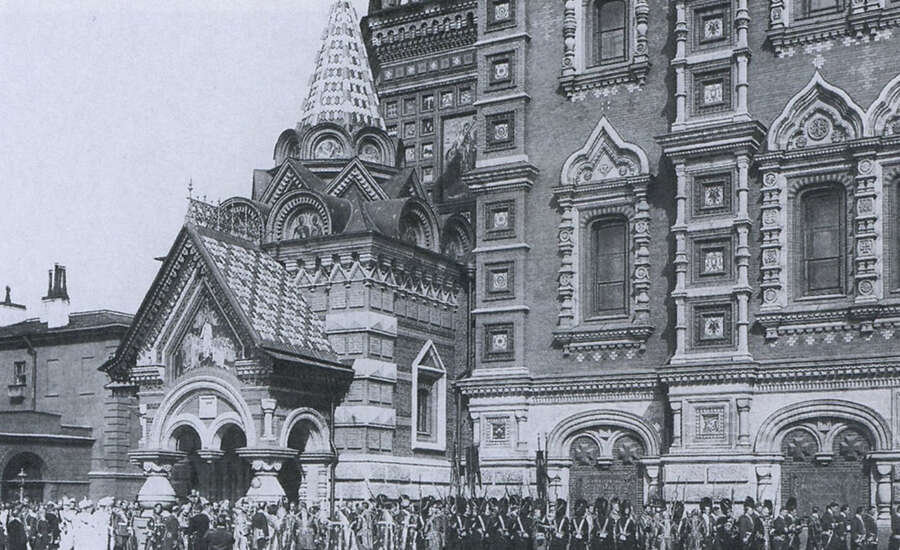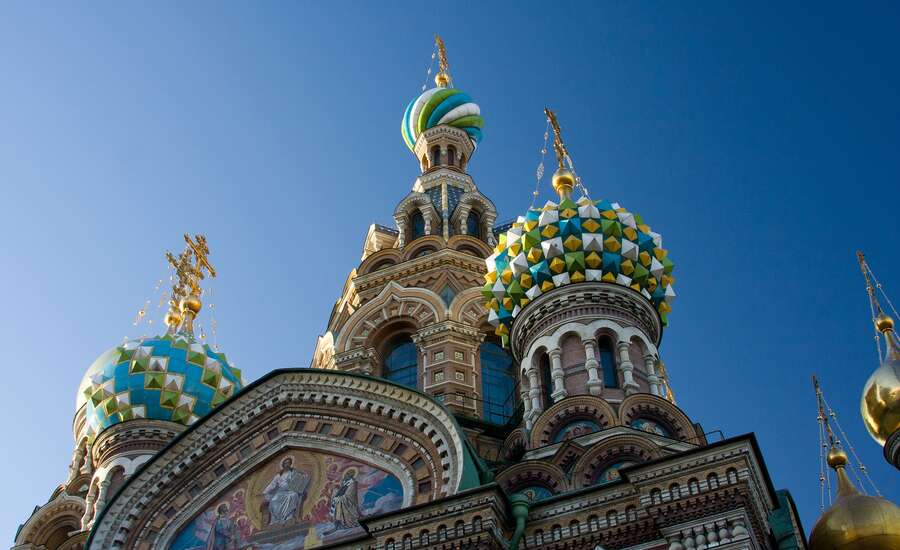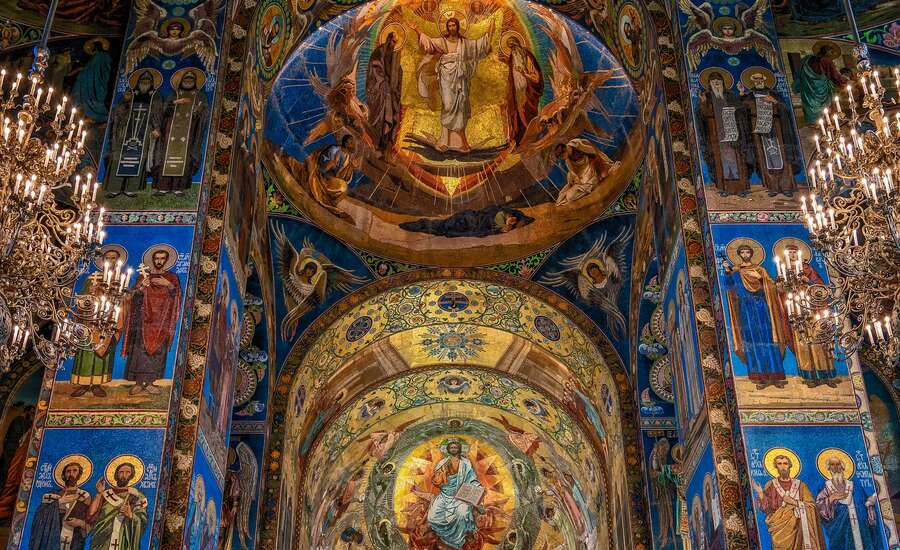
Cathedral in 1917. Photo by O. Whiteman
Tsar Alexander II was known as the ‘Tsar Liberator’. In comparison to his autocratic father Nicholas I he sought to transform Russia through large-scale reforms, including the abolition of serfdom. Unfortunately, not everyone agreed with his vision. Many revolutionary organisations developed during the Tsar’s reign, one of the most violent being the Narodnaya Volya (the People’s Will).
On 1st of March 1881, Alexander was returning to the Winter Palace after inspecting a military roll call, as he did every Sunday. Alexander was travelling alongside the Yekaterinsky Canal with his guards and police when a young revolutionary threw a bomb at his entourage. Despite the carnage, the Tsar was unhurt and stepped out of his carriage to see what was going on. At this moment, a second revolutionary threw a bomb which landed at Alexander’s feet. It exploded, engulfing the snowy scene in thick smoke.
The Tsar was rushed to the Winter Palace, where his family crowded round him as he received his last rites. However, nothing could be done. The bottom half of Alexander’s body had been blown away by the attack and he soon bled to death.
Did you know? At the time of his death, Alexander II had made the first steps towards creating a constitution for Russia. Less than 2 days before he planned to announce his reforms, he was assassinated and his successor, his son Alexander III, chose instead to pursue reactionary and repressive policies. Who knows whether Russian history would have taken the same course, had Alexander II’s reforms been implemented.
The next day, Alexander III decided to construct a church on the spot where his father had been mortally wounded. A provisional wooden chapel was erected on the fallen Tsar’s birthday, enclosing the bloodstained pavement and broken fence, and a competition was opened to design the church.

Consecration of the Savior on Spilled Blood, 1907, unknown author
Most of the designs submitted were in keeping with St Petersburg’s classical European architecture, but Alexander III believed that only a Russian-style church could embody the national spirit, bringing together country, Tsar and religion. The design he selected was a late evolution of ‘Russian Style’ architecture, inspired by Russia’s medieval churches, and would stand in striking contrast to the Neoclassical buildings filling the streets of the Northern Capital.
Construction of the Church on Spilled Blood took place from 1883 to 1907, and the first stone was laid by Alexander III himself. The latest construction methods were employed such as laying a concrete foundation instead of tree trunks and installing lightning rods and electric lighting – 1,689 electric bulbs illuminated the church! A competition was also opened to find craftsmen to design and execute the interior.
Did you know? According to local legend, the ghost of one of the revolutionaries haunts the church. Sofia Perovskaya, whose wave of her handkerchief signalled her conspirators to act, was hanged in April 1881. It is said that she wanders the church with a white handkerchief in her hand.
Revolution broke out a mere 10 years after the completion of the Church on Spilled Blood. The church was soon deprived of its funding, plundered for its valuables, and its staff arrested. In October 1930 the Central Executive Committee ordered the church’s closure. Incredibly, the church was declared to be of no historical or artistic value. Its demolition was planned, interrupted only when the demolition experts were drafted after the Nazi invasion of Russia in the summer of 1941.
Did you know? An artillery shell hit the church’s main cupola during the war and remained lodged in the ceiling for nearly 20 years, until it was retrieved by a brave sapper named Viktor Demidov!
The Church on Spilled Blood was finally granted state protection in 1968, and in 1970 the director of St. Isaac's Cathedral and Museum, G.P. Butikov, persuaded the city bosses and the officials of the Ministry of Culture that the church had considerable historical and artistic value. He also petitioned to make the church a branch of his museum and carry out restoration.
Did you know? Amongst other things, the Church on Spilled Blood was used as a morgue during the Siege of Leningrad, stage set storage for the Maly Opera Theatre, and even a vegetable storage warehouse, earning it the comical name of 'Saviour on Potatoes'.
The building stood with broken windows, gaping holes in the roof and cupolas, and smashed mosaics - such a critically dilapidated condition that research staff had to study archival materials in multiple cities in order to carry out repairs. Restoration began in 1980 and the Church on Spilled Blood finally opened its doors as a museum in August 1997, 90 years after its initial consecration.
Did you know? Rumour had it that the Soviet Union would only last as long as scaffolding remained around the Church on Spilled Blood. The scaffolding was removed in August 1991, not long before the USSR’s collapse. Interestingly, there is a similar legend at St Isaac’s Cathedral.

The church’s exterior incorporates layers of decorative elements into one unique project celebrating Russia’s heritage. Every inch is covered with glazed tiles, ornamental corbels and architraves, carved archways and columns, and semi-circular kokoshniks containing colourful mosaics. Engravings on 20 granite plaques retell the most important events of Alexander’s reign.
The magnificent bell tower is covered in 134 mosaics representing the coats-of-arms of the Russian cities and provinces which donated towards the church’s construction. Pride of place on the bell tower is an icon of Saint Alexander Nevsky, after who the fallen Tsar was named. Directly below the gilded belfry lies the spot where Alexander II was wounded. Five other cupolas are covered in 1000 square meters of jewellers’ enamel in blue, green, white and yellow, arranged in different patterns. The tallest dome reaches a height of 81 metres!

Upon entrance to the cathedral you are immediately struck by colour on every side. Icon cases around the room are made of porphyry, jasper and quartz, the floor comprises 10 types of coloured marble arranged into 45 geometric patterns, and each wall is supported by snakeskin-like serpentinite or iridescent labradorite. The iconostasis is made from warm coloured marble and gleaming silver, inset with mosaic icons and precious stones.
A wall of mosaic covers every inch of the cathedral’s interior, masterfully created by the workshop of craftsman Vladimir Frolov. The artwork depicts religious narratives and figures as well as natural motifs. This was the first time that mosaic provided the primary decorative method of a Russian church. Designed to be viewed from a distance and using an incredibly rich array of shades, some of the mosaics are startlingly realistic and accurately capture the light, colour and emotion of the scenes they depict.
Did you know? There are 7,500 square metres of mosaic in the Church on Spilled Blood. This is the largest mosaic collection in the world.
A canopy made from jasper, rhodonite, topaz and lapis lazuli protects the exact spot where Alexander fell. Inside the canopy are the original cobblestones and pavement of the assassination site. Although the canopy itself is sombre and dark, the mosaics surrounding it are set into a gold background which glows in the light streaming through the windows.
Address and Contact Details:
Griboedov Canal Embankment, 2B
Metro: Nevsky Prospect (500m), Admiralteyskaya (1.2km)
Website: http://cathedral.ru/ru/spas/building
Opening Hours:
From May 1st till September 30th 10:30 – 22:30. Closed Wednesdays.
From October 1st till April 30th 10:30 - 18:00. Closed Wednesdays.
Last entrance is an hour before closing.
Join us on Facebook
We invite you to become a fan of our company on Facebook and read Russian news and travel stories. To become a fan, click here.
Join our own Russian Travel, Culture and Literature Club on Facebook. The club was created to be a place for everyone with an interest in Russia to get to know each other and share experiences, stories, pictures and advice. To join our club, please follow this link.